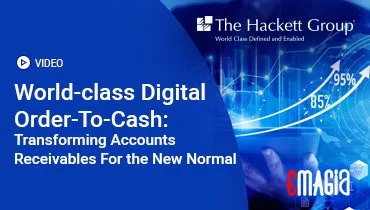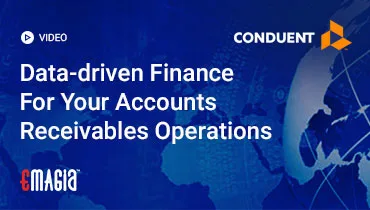Forecasting accounts payable is a critical financial planning process that enables businesses to estimate future payment obligations. This proactive approach is essential for managing cash flow, budgeting, and ensuring timely payments to vendors. Accurate forecasting of accounts payable is crucial for maintaining financial stability and effective working capital management.
Understanding Accounts Payable Forecasting
Accounts payable forecasting involves predicting the amount and timing of a company’s future payments to suppliers and vendors. This process helps businesses plan their cash outflows, ensuring they have sufficient liquidity to meet obligations without compromising operations.
Importance of Forecasting Accounts Payable
Enhancing Cash Flow Management
By accurately forecasting accounts payable, businesses can better manage their cash flow, ensuring they have the necessary funds to meet payment obligations while avoiding unnecessary borrowing or liquidity issues.
Supporting Budgeting and Financial Planning
Accounts payable forecasting provides insights into future expenses, aiding in the creation of more accurate budgets and financial plans. This foresight allows for better allocation of resources and more informed decision-making.
Strengthening Vendor Relationships
Timely payments foster trust and reliability with suppliers. Accurate forecasting ensures that businesses can meet payment terms, potentially leading to better terms and discounts.
Key Components in Accounts Payable Forecasting
Historical Payment Data
Analyzing past payment patterns helps identify trends and seasonality, providing a foundation for forecasting future obligations.
Vendor Payment Terms
Understanding the payment terms of each supplier is crucial. Some may offer early payment discounts, while others may have strict due dates. Incorporating these terms into forecasts ensures accuracy.
Recurring Expenses
Identifying regular, recurring payments, such as rent or utility bills, allows for more predictable forecasting.
Upcoming Projects and Purchases
Anticipating future projects or significant purchases helps in forecasting large, one-time payments that could impact cash flow.
Methods for Forecasting Accounts Payable
Direct Method
This approach involves manually tracking known future liabilities, such as open purchase orders and contract payments, providing a near-term view of cash obligations.
Regression Analysis
Utilizing statistical methods to analyze historical data and identify patterns, regression analysis can predict future payables based on variables like revenue or production volume.
Invoice Aging Reports
These reports categorize unpaid invoices by age, helping businesses identify overdue payments and predict future cash outflows.
Best Practices in Accounts Payable Forecasting
Regularly Update Forecasts
Frequent updates ensure that forecasts remain accurate and reflect current business conditions.
Leverage Technology
Utilizing accounts payable automation tools can streamline the forecasting process, reduce errors, and provide real-time insights.
Collaborate Across Departments
Engaging with procurement, finance, and operations teams ensures that all relevant information is considered in the forecasting process.
Common Challenges and How to Overcome Them
Data Inaccuracy
Inaccurate or incomplete data can lead to faulty forecasts. Implementing robust data management practices and leveraging automation tools can mitigate this risk.
Changing Vendor Terms
Suppliers may alter payment terms, affecting forecasts. Maintaining open communication with vendors and regularly reviewing agreements can help manage this challenge.
Unexpected Expenses
Unforeseen costs can disrupt cash flow. Building a buffer into forecasts and maintaining contingency plans can provide flexibility.
How Emagia Enhances Accounts Payable Forecasting
Emagia offers advanced analytics and automation solutions that significantly improve the accuracy and efficiency of accounts payable forecasting. By integrating real-time data, predictive analytics, and machine learning, Emagia enables businesses to:
- Automate data collection and analysis, reducing manual errors.
- Gain real-time visibility into payables and cash flow.
- Predict future payment obligations with greater accuracy.
- Enhance decision-making through actionable insights.
By leveraging Emagia’s solutions, companies can transform their accounts payable processes, leading to improved financial planning and operational efficiency.
Frequently Asked Questions
What is accounts payable forecasting?
Accounts payable forecasting is the process of estimating future payments a business will need to make to its suppliers and vendors. It involves analyzing historical data, current obligations, and anticipated expenses to predict cash outflows.
Why is accounts payable forecasting important?
It is crucial for managing cash flow, ensuring timely payments, maintaining good vendor relationships, and supporting accurate budgeting and financial planning.
How often should accounts payable forecasts be updated?
Forecasts should be reviewed and updated regularly, typically monthly or quarterly, to reflect changes in business operations, vendor terms, and market conditions.
What tools can assist in accounts payable forecasting?
Automation tools like Emagia can streamline the forecasting process by providing real-time data analysis, predictive insights, and integration with existing financial systems.
How does accurate forecasting benefit vendor relationships?
By ensuring timely payments, accurate forecasting helps maintain trust and reliability with suppliers, which can lead to better terms, discounts, and stronger partnerships.
In conclusion, forecasting accounts payable is a vital financial planning process that enables businesses to manage their cash flow effectively, maintain strong vendor relationships, and support strategic decision-making. By understanding its importance, implementing best practices, and leveraging advanced tools like Emagia, companies can enhance their financial stability and operational efficiency.



